Weapons Systems Tuning Group Reunion
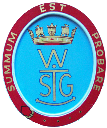
© WSTG Reunion Committee 2016
Go to top of page
Frank Moore
WSTG 1965 - Dec 2001
As the son of a major in the Royal Artillery Frank had an interesting few years at the start of his life.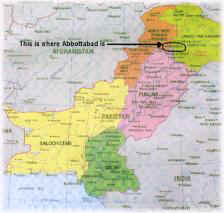
He was born on the North West frontier of India on the Khyber Pass in Abbottabad in August of 1940. This was one of the many areas of the world that were coloured pink in those days of the British Empire and many service men spent years in this part of the world, in fact Frank’s family was not to leave India until the partition in 1947.
His brother Michael had the distinction of being born in Dulali, a word that has lived on in the English language.
A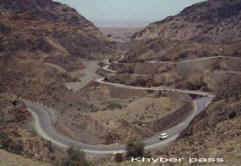 t the partition of India the British Army moved out with most of their Anglo Indian followers. This was not a peaceful division of India and the train journey to Bombay was fraught with danger. In parts of their train murder of their servants [armahs] was carried out.
t the partition of India the British Army moved out with most of their Anglo Indian followers. This was not a peaceful division of India and the train journey to Bombay was fraught with danger. In parts of their train murder of their servants [armahs] was carried out.
Some trains at this time arrived at their destination with all passengers dead and by the end of partition 17 million people had moved across the land leaving 1 million dead.
The Moore family must have been relieved to leave this carnage behind them and board the ship from Bombay. Their ultimate destination was England and Shoeburyness, the well-
As with all service families there were many moves over the years and Frank also lived at Larkhill on Salisbury Plain. His latent engineering talents came to the fore here as he experimented on damming the local river the resulting success flooding the local golf course and earning a reprimand from his headmaster. A more interesting move was to Fort Perch at New Brighton, which guards the approaches to the Mersey. Frank obviously enjoyed this unusual home as he often mentioned it.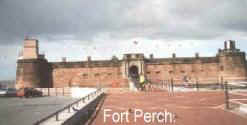
Finally he moved to Burnaby road in Portsmouth when his Dad was the Major in charge at Fort Brockhurst in Gosport.
Frank lived in one of the houses opposite Milldam House, which was much later to be his headquarters when serving in WSTG. Frank’s wife Linda said that Major Moore was the last man out of Fort Brockhurst when it finally closed; they’re being little use for the horses and gun carriages based there.
Frank did not go to school until he was eight years old in 1948, which probably ties in with his return from the far east, however he made up for this by going to eight different schools before ending up in Portsmouth.
Frank wanted to join the Navy but was advised by his parents to go into the Dockyard. He was obviously a bright lad because in spite of his unusual schooling he came high on the apprentice entrance exam and chose an electrical apprenticeship.
I have no details of his apprenticeship but assume like us all he had a year of general engineering work on the bench, periods in the various electrical shops and afloat.
One period which he shared with Orion Young was a time in the drawing office, which he hated in spite of being a good draughtsman and artist.
As a fitter in the early 60s he worked in the shop testing gyro compasses and it was from here that he learnt of WSTG and volunteered to join, doing so in 1965.
From Linda I was told that his first ship was HMS Cleopatra at Devonport. She was a batch 1 Leander built at Devonport, completing build and setting to work in January 1966.
Just prior to his marriage he was working at Scotts in Greenock on one of the Australian Oberons, RAN OVENS. On his wedding day his telegram from the Australians asked where he was as “Tube doors were open” and double pay was to be had.
Frank had one or two accidents whilst on detached duty, in Glasgow he was hit by an uninsured driver and thrown into the air landing on a pram which catapulted the baby into the air, both ending up in the Western Infirmary. Frank came off worst and travelled back to base to be met by Don Warren who ferried him home. He did however make the Glasgow papers.
Whilst in Falmouth his back “went” on him and he was unable to move, the NHS was on strike so his three WSTG mates, Gordon Hoare, Chris Whiting and George Robinson travelled all the way back from Portsmouth to rescue him. Linda said she would never forget Frank being carried out on a door, which Chris had removed with his trusty WSTG tool kit. She felt that this demonstrated the camaraderie within WSTG; they were more than just work mates.
His worst incident happened in the bad old days when 2nd class travellers had to share the overnight sleepers to the north. Frank was joined by a drunken Scotsman and ended up being stabbed by his new companion. Frank was rushed to hospital and the drunken Scotsman eventually ended up in prison.
As can be seen working away from home could have its problems.
As far as I am concerned Frank was best known for his work on the IKARA system and the Minehunters.
T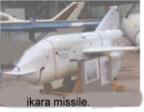 he first Ikara fit started in 1970 but before we move on to that a slight digression on Frank’s life long interest in motorcycles and cars.
he first Ikara fit started in 1970 but before we move on to that a slight digression on Frank’s life long interest in motorcycles and cars.
In the 1960s Franks main interest was motorcycle racing. He raced at all the well-
Frank also had a lifelong passionate interest in cars and their engineering and was able to carry out any repair on his own and other vehicles. By 1967 as a single man he had at last saved up to buy his dream car “a Jaguar”.
His best friend in the motorcycle fraternity was Linda’s brother and in 1967 romance with Linda entered the scene and the Jag was abandoned for marriage and the mortgage on a house.
Frank then had to give up the motorcycling due to insurance problems but now devoted his life to his family and his work.
T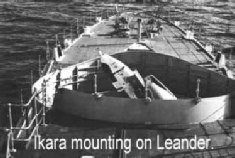 he Ikara team was formed in the late 1960s with Sid Porter as the team leader; Sid spent a lot of time in Australia at Woomera where the system was designed; Frank and two EMI engineers completed the team.
he Ikara team was formed in the late 1960s with Sid Porter as the team leader; Sid spent a lot of time in Australia at Woomera where the system was designed; Frank and two EMI engineers completed the team.
The Ikara was a limited fit due to its task being taken over by helicopters. It delivered a Mk 44 or 46 torpedo a max distance of 11 miles. With the delivery point being calculated by inputs from on board sensors.
Eight of the Batch 1 Leanders were converted during refit the first being HMS Leander at 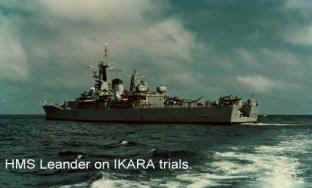 Devonport.
Devonport.
Setting to work was carried out in 1971/2 and then the team continued on with the first of class sea trials on the range at AUTEC/ Andross in the USA. These were carried out over a period of three months with a total of 19 firings at an A class submarine.
Frank spent a lot of time away on this job including the three months in the States while Linda, like all WSTG wives had to cope with a young family on her own for long periods. We salute them.
Sid Porter was not a hands on team leader and left the work to his team, Frank was definitely “hands on” and gladly gave his time to his job getting involved in all aspects and working long hours.
Other fits followed on HMS Aurora at Chatham and Arethusa at Portsmouth.
In 1971 HMS Bristol also had an Ikara fit in which WSTG was the Setting to work authority.
The IKARA fits completed in 1977 although as the WSTG refit coordinator I can remember one Leander in refit in Gibraltar, which had an IKARA fit, in which Frank was involved. It sticks in my memory because, as usual with Frank, he was so engrossed that he missed his flight home and I had to find Linda in Heathrow and tell her he would be on the next Dan Air plane.
The end of the IKARAs fitted in very well with the start of the HUNT class mine countermeasures vessels. With Chris Whiting and then Ray Callaghan as his team leader Frank became the expert on the AIO system, a modified CAAIS, and the 193M mine hunting sonar with the MSSA [Acoustic minesweeping system], RCMDS [remote control mine disposal system] and PAP104 also being in his remit. [See photo below]
On passing the HPTO board he became the MCMV Sonar team leader on Ray Callaghan’s retirement.
As his SPTO I can say Frank built up an enviable reputation for his expertise on this class of ship with the Navy and the projects. The projects in particular, who were often shy of travelling, relied heavily on him for transfer of information on problems etc.
He did enjoy his job and the necessary trips to places like the Kyle of Loch Ailsh, which indeed is a special place. 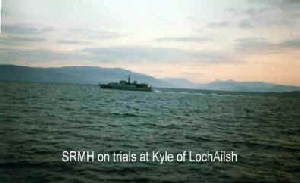
There was a natural progression on to the Single role Mine hunters, the first of class building at Woolston in 1988.
Frank and I spent many days at Templecoombe being persuaded by project and Plesseys that all was going well. The evenings being spent in some of the very nice local pubs.
Again Frank made it his business to cover all of the equipments fitted, including the 2093 sonar, Nautis-
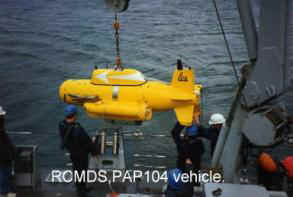 Between the SRMHs he carried out other jobs, he took on the task of setting to work of the sonar 2040 fitted on the Upholder class. This was a French set derived from the ELEDONE made by Thompson Sintra and we had considerable assistance from French engineers.
Between the SRMHs he carried out other jobs, he took on the task of setting to work of the sonar 2040 fitted on the Upholder class. This was a French set derived from the ELEDONE made by Thompson Sintra and we had considerable assistance from French engineers.
Frank looked after them so well that he had frequent invites back to France. They failed to understand why engineers in the UK are not held in the same high esteem as on the continent.
With Paul Madden he also did extensive sea trials on the Sonar 2031 fitted to the Type 22s. This involved trials in the mid Atlantic working with Gold Rover and seven 22s. As one trial finished the next started. Each trial took seven hours and involved helicopter and Jack stay transfers. Again this demanded a long period away from Linda his wife and two children Louise and Andrew.
Being born in 1940 Frank was due to retire in August of 2000, not an event he looked forward to and he grasped at the opportunity to carry on to complete the SRMHs.
Getting in a few more trips to his beloved Kyle of Loch Ailsh.
He did eventually retire in late 2001 and like most other people found the experience not too daunting. Apart from long walks with old friends he started his restoration of a motorcycle and visited old haunts such as Brands Hatch.
When it was suggested that WSTG needed a trio of people to run reunions and sort out the archives he readily agreed to join the committee and enthusiastically started getting the archives in better order. His computer room filled up with the photos and paperwork collected over the years and he invested in a scanner/ printer to make his tasks easier. He had many plans to increase the content of the archives including storing the honours boards in his garage.
In late 2003 he was asked if he would help on the forthcoming refits of SRMHs in Portsmouth Naval Base. After some agonizing he agreed but it was not to be as he passed away in Jan 2004, far too early given his on going projects and plans.
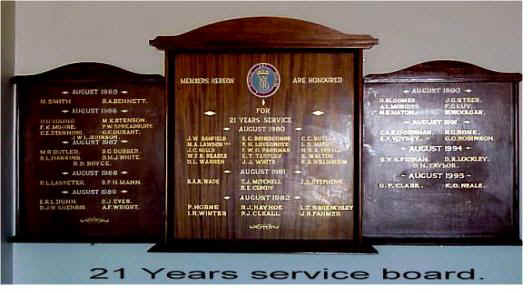
He is a greatly missed friend.
Frank’s name is far left third from top under year 1986 i.e. F K MOORE.
Written by Ivan Winter with assistance from Linda Moore.
Proof read and corrections by Ken Wingate.
A combined effort. 24/03/05.